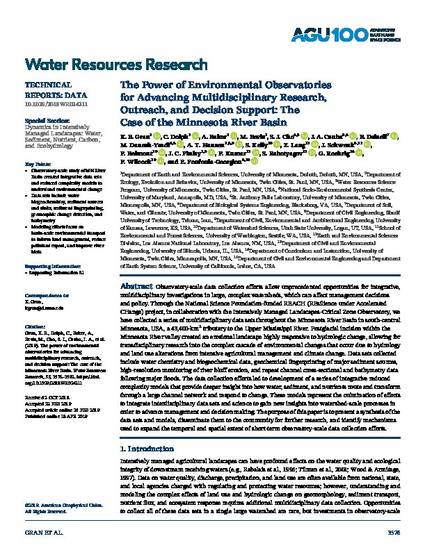
Article
Power of Environmental Observatories for Advancing Multidisciplinary Research, Outreach, and Decision Support: The Case of the Minnesota River Basin
Water Resources Research
(2019)
Abstract
Observatory‐scale data collection efforts allow unprecedented opportunities for integrative, multidisciplinary investigations in large, complex watersheds, which can affect management decisions and policy. Through the National Science Foundation‐funded REACH (REsilience under Accelerated CHange) project, in collaboration with the Intensively Managed Landscapes‐Critical Zone Observatory, we have collected a series of multidisciplinary data sets throughout the Minnesota River Basin in south‐central Minnesota, USA, a 43,400‐km 2 tributary to the Upper Mississippi River. Postglacial incision within the Minnesota River valley created an erosional landscape highly responsive to hydrologic change, allowing for transdisciplinary research into the complex cascade of environmental changes that occur due to hydrology and land use alterations from intensive agricultural management and climate change. Data sets collected include water chemistry and biogeochemical data, geochemical fingerprinting of major sediment sources, high‐resolution monitoring of river bluff erosion, and repeat channel cross‐sectional and bathymetry data following major floods. The data collection efforts led to development of a series of integrative reduced complexity models that provide deeper insight into how water, sediment, and nutrients route and transform through a large channel network and respond to change.
Disciplines
Publication Date
2019
DOI
doi:10.1029/2018WR024211
Citation Information
Patrick Belmont. "Power of Environmental Observatories for Advancing Multidisciplinary Research, Outreach, and Decision Support: The Case of the Minnesota River Basin" Water Resources Research Vol. 55 Iss. 4 (2019) p. 3576 - 3592 Available at: http://works.bepress.com/patrick_belmont/121/
